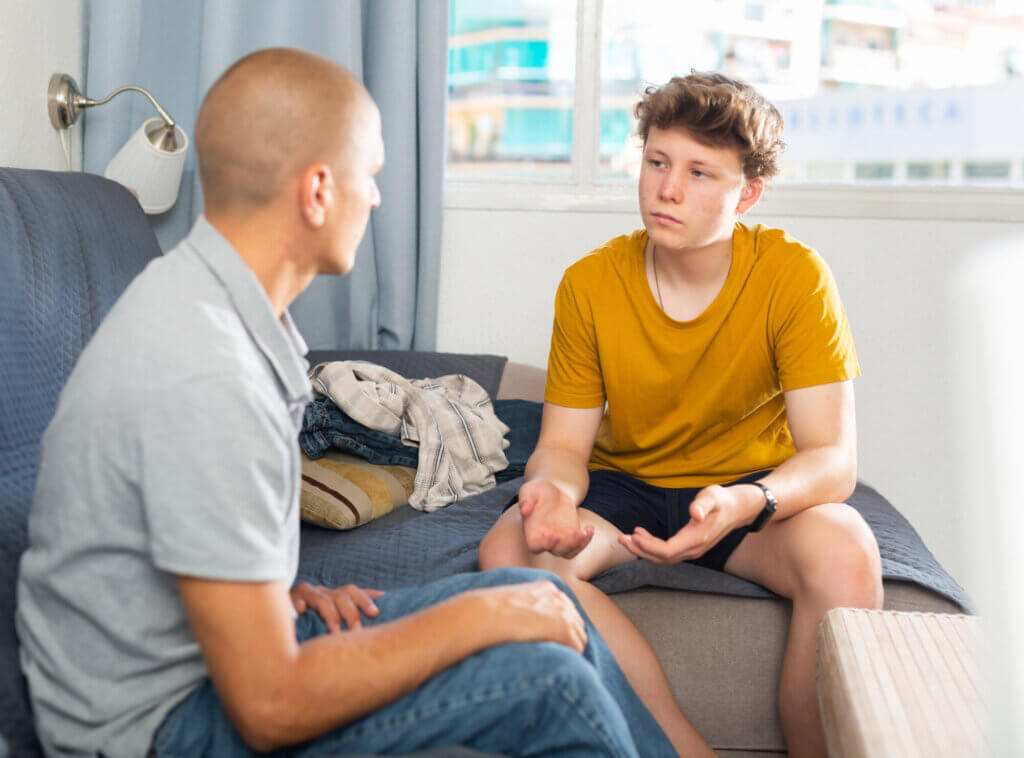How to Talk to Kids About Porn
Why do we need porn-critical sex education?
It is a devastating fact that most children and young people will be exposed to porn, even if not intentionally. Therefore, it is important that the sex ed classroom is a space where all children are supported to critique the misinformation that porn — and porn-inspired hypersexualized media — provides. Porn-critical sex education is empowering: It conveys to all young people that what porn depicts is not a loving, consensual sexual relationship. Porn-critical sex education is about safeguarding. It says, “you don’t get to treat someone like that,” and it tells every child that it’s not okay for someone to do that to you.
How can a sex ed teacher promote healthy sexual development for their students?
High-quality sex education — which includes being direct, factually accurate, and non-judgmental — holds students in the highest esteem and to the highest possible standards of personal behavior. It is underpinned by the belief that all individuals are worthy and capable of loving, respectful, intimate relationships. Sex education that promotes any message other than complete clarity regarding the production and nature of porn or doesn’t challenge the terrible examples of human behavior it depicts is simply incompatible with this message. It suggests that the pornography industry deserves to have a say in their developing understanding of themselves, their bodies, and their relationships.
What are the most common questions about sexual health you get asked by teens?
An emerging theme I see is teens querying whether their experiences or understanding of an issue is normal. Overwhelmingly, their questions are completely sensible, and their feelings are understandable. More often than not the young person seeking advice knows the answer for themselves, but in asking the question they are taking an opportunity to think out loud and organize their thoughts. I believe this is an interesting indictment of how porn and porn-influenced media has undermined the confidence of so many teens in relation to their construction of puberty, reproduction, relationships, and sexual behavior.
What are the biggest misconceptions about teens and sexual health?
Engagement with media representations of sex, and not just in terms of porn, can enable young people to present as very knowledgeable regarding sex. This can lead to adults thinking teens have all the information they need to make decisions about their sexual health and behavior, or even that the child knows more than the adult. Teens often appear to speak with confidence and authority on a range of niche issues relating to sex while lacking the basic but essential knowledge and skills regarding biological processes and how real sex happens.
What impact does technology have on teens’ sexual development?
Technology has completely transformed the sex education landscape, bringing information that is often inaccurate, hypersexualized, and extreme into their field of vision. I have noticed that a lot of ‘old-school’ misconceptions are back, which we can probably attribute to discussion forums and chat groups as well as the belief by adults that young people are receiving their sex education from tech and, therefore, do not need to be taught the basics. Extreme behaviors have been normalized by not only porn, but also gaming, TV, and movies. The core ingredients of healthy, positive sexual relationships such as respect, intimacy, consideration, and communication are rarely explored, or they are characterized in a derogatory way, such as vanilla.
It’s critical for parents to talk to their kids about porn. How and when should parents broach the subject with their teens?
The thought of talking about porn sounds quite daunting, and I can imagine that many parents and caregivers would balk at the prospect. However, conversations about porn are about supporting teens to develop a critical understanding of all media, recognizing the purpose of and the motivation behind the content, identifying any misinformation, and determining who stands to gain from its dissemination. Porn sits within a context of an exploitive and destructive industry; it presents examples of sexual interactions that are often extreme, abusive, and discriminatory and, therefore, conflict with the values that we would wish for any functional society.
There are many examples of hypersexualized content in mainstream media, thanks to porn’s impact on society. Adults can use these examples as an entryway into discussions about porn with their kids. Similarly, as discussed in news reports, examples of exploitation in society, such as sweatshops and domestic servitude, can be used as a springboard to discuss sexual exploitation. These conversations support teens to make connections, think critically, and challenge normalized messages about bodies and sex that are barriers to well-being and healthy intimate relationships.

